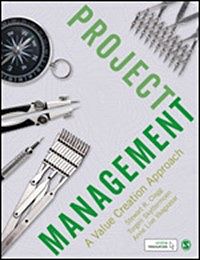Project Managing a Book on Project Management
In this essay, Stewart R. Clegg describes the process of the resulted in the English-language version of the book, Project Management: A Value Creation Approach, which he wrote with Torgeir Skyttermoen of the Oslo Business School, Oslo Metropolitan University and Anne Live Vaagasar of the BI Norwegian Business School. Social Science Space parent SAGE Publishing published the book in January.
Torgeir and Anne Live had published two editions of the book in Norwegian. We had a mutual friend who suggested to them that they should think of translating it; he knew me, and he suggested that I should join the project. We had a meeting, where the general outline of the book was explained to me and I explained to Torgeir and Anne Lise how I would approach the exercise of writing the book, drawing on previous texts, Strategy: Theory & Practice and Managing & Organizations: an introduction to theory and practice. They were excited about the ideas and I was excited about making a contribution to the project management literature in the form of a book that scoped the whole field, having written a few papers in the area.

One of the reasons I was excited was because I had for some time harboured the ambition of integrating the broader Management and Organization Studies and Project Management literatures because it seemed odd that this was not the case – as if what we know about management and organizations is not relevant to projects and as if what we know about projects is not relevant to mainstream management and organization studies. There were some points of contact in the literature, especially around the area of temporary organizations, but nothing that would seek to integrate the two fields for the student coming to project management for the first time. Finally, I wanted to lessen what I, perhaps mistakenly, took to be an engineering bias in the literature and in all these I was at one with Anne Live and Torgeir.
Being keen consumers of politics and international current affairs, we were influenced by a great many things that were current and sought to make use of them where we could. Using The Conversation to source case material and examples proved a great way of doing this.
The most challenging aspect of writing was integrating the translation from the Norwegian and integrating and developing this material to create a wholly new book, one written is a very different style. One challenged was dealing with the strong bias in the literature. Project management can be a little prescriptive at times, given the importance of the project management body of knowledge for practice, know-how that is often based on convention rather than research. While it was obviously important to impart the core components of this body of knowledge to the beginning student we sought, in the writing, to always try and situate this as a form of practical wisdom within the context of the broader social sciences where it was possible to do so.
Writing a first chapter, “Mapping Projects: An Introduction,” was really important in this process as in this introduction it was possible to expound ideas about project management as practical wisdom that allowed the incorporation of much of the project management body of knowledge, while creating a framework that allowed, where necessary, us to take a little distance from some of the jargon and taken-for-granted assumptions while still ensuring that the students learnt the basics. What was surprising was the ability to think about projects on a very broad canvass in finding examples – so we discuss cases from all over the world, in many different sectors of the economy, not just construction and engineering projects. In the book, we have included cases as different as leading Brexit, new software development and environmentally friendly product development at Burger King. Our favorite example is probably being able to discuss Glastonbury as a project. Sadly, in the second year of the pandemic, the music festival will again not occur.
The “value creation approach” that we develop in the book is, we think, extremely innovative: we discuss value in projects in much broader terms than is usually the case. It’s not just about the profit; it’s not just about the shareholders. We are concerned with value in the broadest sense. Most importantly, think of value in more than just dollars and cents. Don’t get hung up on measuring things – something that you cannot measure might end up being much more important than that which you can. You can easily measure the cost and time overruns of the Sydney Opera House while you cannot measure the joy of seeing it for the first time from a ferry on the harbour, a joy that has been replicated millions of times by millions of people.
We were asked, not so long ago, what advice we would you give to new scholars and incoming researchers in this particular field of study? Easy! Read our book! Be open to ideas, always! Learn the think of value in terms of a broad set of stakeholders, including employees, community and ecology. Sometimes, the world as it is socially constructed is overlooked in its social construction, precisely because it is far too convenient for those who benefit from it. A recent book by John Child, on Hierarchy, written by a senior scholar with roots in the Aston School, questions a core aspect of the world that many people, including the Aston project, took for granted. Hierarchy is such a case, a case that is well protected by many supplementary stories: other social constructions, such as stories of functional or biological necessity, or alignment of principals and agency, have been developed to account for these other fundamental constructions. Some of these stories are challenged not only by Child but also by some of the emergent practices of project management which we discuss. With Child, we would like to think that our contribution is one that will have practical import but also help us to see a world that we though we knew, anew.


























































































